At the northwestern foot of Sannodahti hill from the gates of Akasaka Gomon to the gate of Toranomon was a narrow pond of Tamayke, in the form of a pumpkin
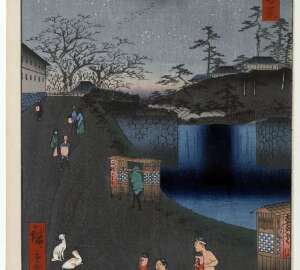

At the northwestern foot of Sannodahti hill from the gates of Akasaka Gomon to the gate of Toranomon was a narrow pond of Tamayke, in the form of a pumpkin
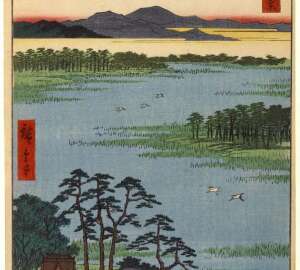
The pond of Inokasira was in the Musashi-no area, where there were many springs. This area is significantly removed from the center of Edo, it is difficult to call it
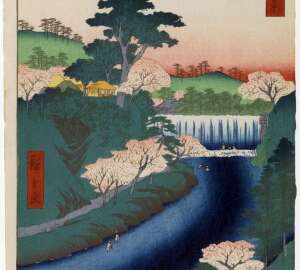
The section of the river Syakudzigawa, flowing near the Shinto shrine of Lodz Gongen, was named Otonasigawa. The Lodz Gongen shrine was built in the wake of Kumano Gongen in
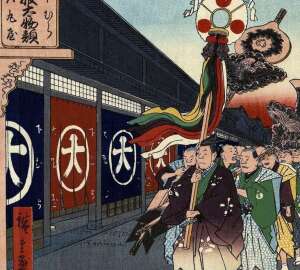
The Quarter of Odemmate was the first road station on the Osjukaido road. In 1594, after the construction of the bridge of Senzujoshi, the need for Odemmata fell away. Here
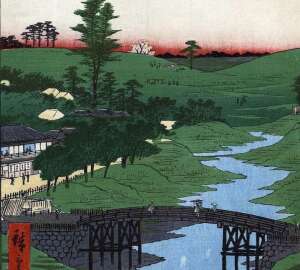
To the south-west of Edo was the plain of Hiro-ha hara, which for a long time remained uninhabited. At the end of the Edo period, the townspeople began to flock
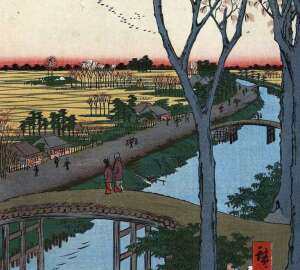
The terrain depicted by Hiroshige was adjacent to the eastern bank of the Sumidagawa River, which flowed into the Edovan Gulf. In the north of the Khondze district, there were
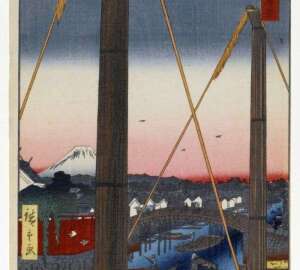
In the foreground, Hiroshige portrayed the masts of two merchant ships through which the Inaribasi Bridge and the Hattebori Canal are visible. A large number of artificial canals were explained
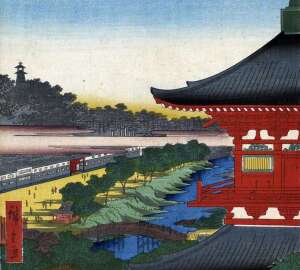
The Dzodzi Monastery was the main temple of the Jodoshu school in Kanto, whose adherents were the Tokugawa house. They buried Tokugawa shogun family members. Kaneiji Temple in Ueno was
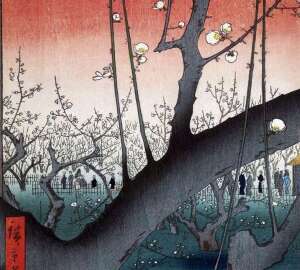
To the northeast of the Sanctuary of Kamaydo-tenzin, which is also known as the Yoshima-tenzin temple in Edo, was Seykean’s famous plum mansion and the famous plum garden – Kameydo
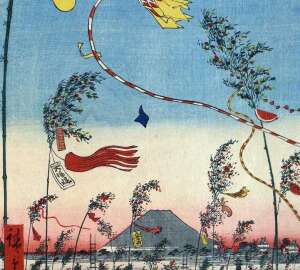
The Tanbata-Matsuri holiday is one of the most romantic holidays in Japan. It is of Chinese origin. In Japan it has been celebrated since the Nara period. Celebrate it on
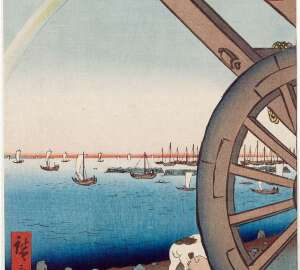
On the outskirts of the Sibatamati quarter, at the gate of Takanava, there used to be an outpost checking luggage for people going to Edo and Edo. Because of the
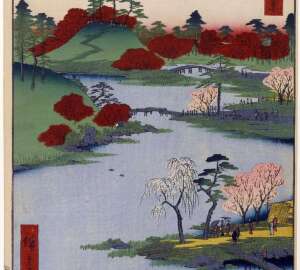
Next to the shrine of Tomiok Hatimangu, more precisely, to the right of it, was the Buddhist temple of Battoji Eitayidzi, who was famous for his garden. The territory of
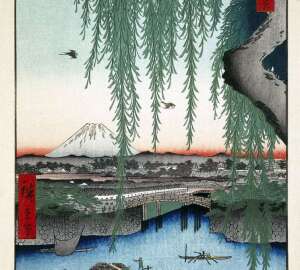
The Yatsumi-no hasi bridge is translated as “The Bridge of Eight Kinds,” the figure eight denotes the multiplicity of something, which means that species can be opened in any direction.